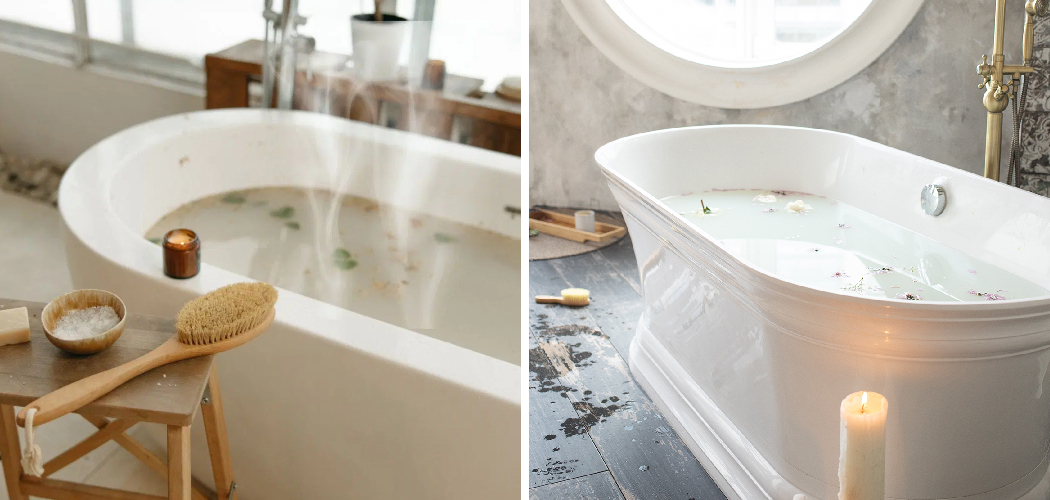Maintaining warm bathwater is essential for a relaxing and enjoyable bath experience, providing a soothing escape from the stresses of daily life. One common frustration many face is how quickly bathwater tends to cool, disrupting one’s time for relaxation and comfort. Understanding how to keep bathwater warm can significantly enhance your bathing experience and prolong the warmth that envelops you.
This article will explore various strategies to extend the warmth of your bathwater, including effective preparation techniques, insulation tips, and useful tools that can help maintain the desired temperature. With the right approach, you can transform your bath into a tranquil oasis, allowing you to unwind and rejuvenate at your leisure.
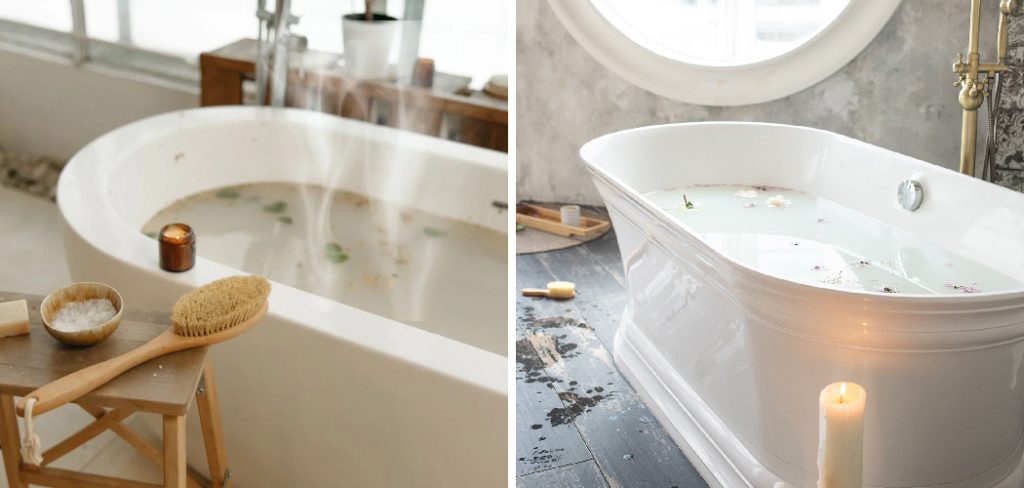
Preparing the Bath: Steps to Retain Heat from the Start
Preheat the Bathroom
Before filling the bathtub, it’s beneficial to create a warm environment by preheating the bathroom. This helps to ensure that your bathwater retains heat for a longer period. One effective method is to use a space heater, allowing it to warm up the room for about 15-20 minutes before you step in. Alternatively, running hot water in the shower for several minutes can raise the overall temperature in the bathroom, creating a comfortable atmosphere.
Remember to close windows and doors to prevent drafts, as cold air can quickly invade the space, contributing to heat loss. By setting a warm room temperature, you reduce the temperature difference between the bathwater and the surrounding air, thus slowing the cooling rate of the water and enhancing your overall bathing experience.
Use Hotter Water at the Start
Starting your bath with slightly hotter water than usual is another effective strategy for maintaining warmth. Consider heating the water a few degrees higher than your desired soaking temperature when filling the tub. This adjustment accounts for the cooling that occurs when the warm water is exposed to cooler air. Finding the right balance is crucial—too hot can lead to discomfort or even burns.
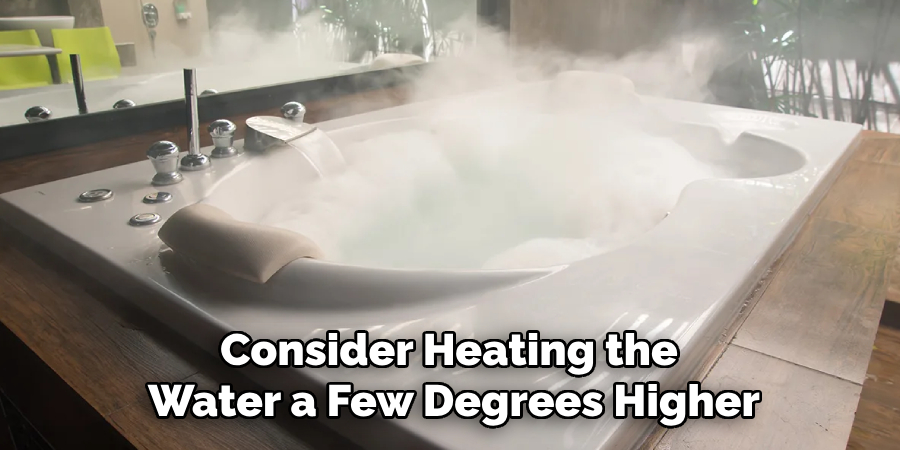
To test the water temperature safely, use your wrist or elbow, which are more sensitive than your hands, to gauge if it’s at a comfortable level. Additionally, ensure the hottest water you add is safe, and always mix it well before getting in. With these precautions in place, you can enjoy a satisfying soak without risking scalding while combating heat loss right from the beginning of your bathing ritual.
How to Keep Bathwater Warm: Insulation Techniques
Use a Bath Cover or Lid
One of the simplest yet effective methods for maintaining warm bathwater is to cover the tub with a bath cover, shower curtain, or even a towel. This practice creates a barrier between the warm water and the cooler surrounding air, significantly reducing heat loss. When covering the tub, ensure the material is thick enough to trap heat effectively.
For those looking for DIY alternatives, a large towel or blanket can be draped over part of the tub’s surface, providing insulation. This strategy helps retain warmth and can make your bath more inviting, creating a spa-like atmosphere. Remember to remove the cover carefully before getting in, ensuring you don’t accidentally spill water on the floor.
Insulate the Tub
Insulating the bathtub itself can be an excellent long-term solution for heat retention. For those seeking a quick fix, an insulating bath mat placed under the tub can help combat heat loss through the cold surfaces beneath. Additionally, consider using insulating foam wraps around the exterior of the tub, which can provide a more permanent solution for significant heat retention.
These materials work by reducing the heat transfer between the warm water and the cooler surfaces around the tub, ultimately helping to keep your bathwater warm for extended periods. Investing in these insulation methods enhances comfort and contributes to energy efficiency, allowing you to enjoy your baths without frequent reheating.
Add a Hot Water Top-Up
Occasionally, adding hot water is a practical solution to maintain the desired temperature throughout your bath. This method helps counteract the natural cooling that occurs as you soak. However, doing this safely and without drastically altering the overall water level is essential.
Keep a kettle or pitcher filled with hot water within arm’s reach; this will allow you to top up your bath whenever you feel the water starting to cool. Ensure the water you add is well-mixed to prevent hot spots, which could lead to discomfort. A good practice is to test the mixed water with your wrist or elbow before adding it to the tub. This strategy keeps the temperature pleasant during your soak and lets you relax in a warm bath without interruptions.

Tools and Products to Keep Bathwater Warm
Using a Bathtub Heater
Portable bathtub heaters, or immersion heaters, are an excellent option for maintaining warm bath water. These devices are designed to be submerged directly in the water, heating it as needed to keep your bath comfortable. Typically, they feature adjustable thermostats, allowing you to set the desired heat level. When using a bathtub heater, it’s crucial to ensure that the device is compatible with your type of bathtub—some materials may be more susceptible to heat damage than others.
Always follow the manufacturer’s instructions for setup, usage, and safety precautions, such as avoiding contact with water when the heater is plugged in and turning it off before leaving the bathroom unattended. Proper use of bathtub heaters can provide a consistent temperature, enhancing your overall bathing experience.
Heat-Retaining Bath Products
In addition to heaters, various heat-retaining bath products can help maintain water temperature. Bath oils and salts designed for heat retention work by forming a thin layer on the water’s surface, effectively slowing heat loss through evaporation. For example, products containing glycerin or other emollients can help create this barrier. Popular choices include Epsom salts, which provide soothing benefits and contribute to water longevity, and aromatherapy bath oils that nourish the skin.
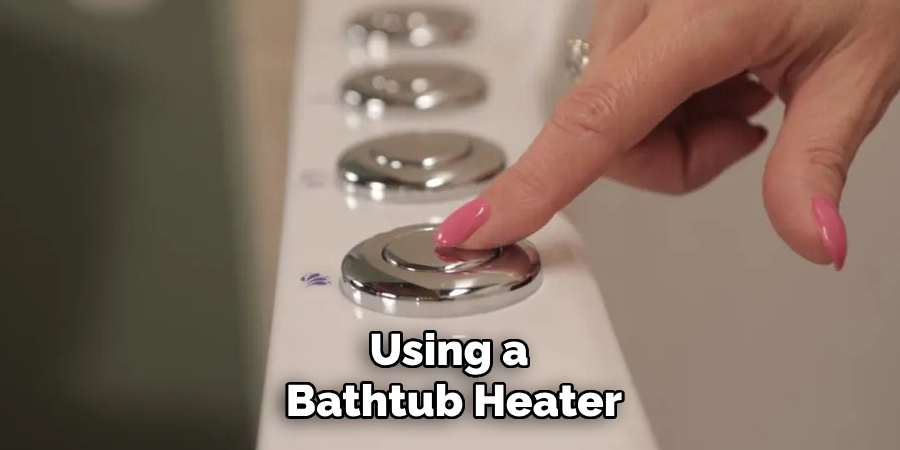
When selecting these products, look for ones known to be gentle and safe for the skin, avoiding harsh chemicals or allergens. Using heat-retaining bath products in combination with your heating strategies can make for a truly luxurious and enduring bathing experience, allowing you to relish the soothing warmth.
DIY Solutions for Prolonging Bathwater Warmth
Hot Stones or Warm Towels
One effective DIY solution for maintaining bathwater warmth is to place hot stones or warm towels along the tub’s edges. By preheating smooth, flat stones in hot water or the oven, these can be strategically arranged around the tub to radiate warmth, effectively prolonging the heat of your bath without relying on additional water or electricity. Similarly, rolled towels heated in the dryer can add comforting warmth while also providing a spa-like accent to your bathing experience.
Use a Bubble Bath
Incorporating a bubble bath into your soaking routine can significantly help retain water temperature. The layer of bubbles acts as an insulating barrier, trapping heat and reducing evaporation. When selecting a bubble bath, opt for long-lasting products that offer both bubble volume and skin-nourishing properties. Look for formulations with natural ingredients, avoiding harsh chemicals and those that promote extended bubbles to keep your water warm for longer, ensuring a more enjoyable and relaxing bathing experience.
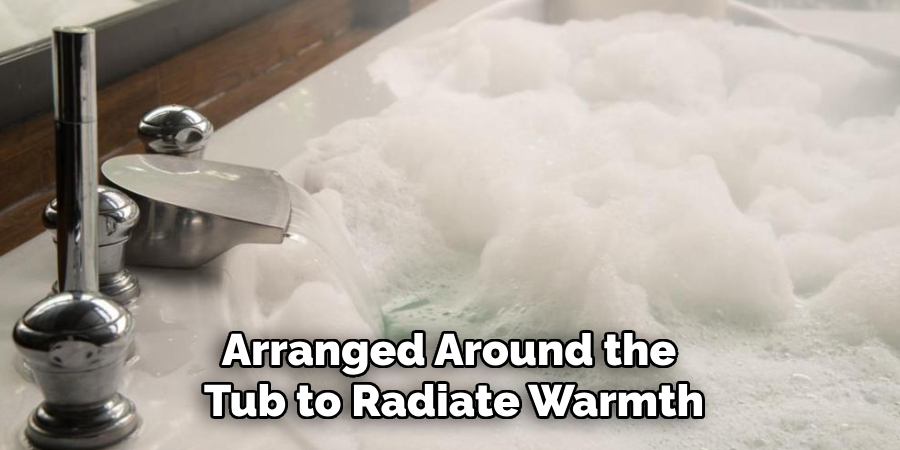
Preventive Measures: Keeping the Water Warm for Longer
Close Doors and Windows
To effectively retain heat in your bathwater, it’s essential to close doors and windows, preventing cold drafts from disrupting the warm atmosphere of your bathroom. Cold air can significantly accelerate heat loss, making your relaxing soak less enjoyable. Consider adding weather stripping to windows and using draft stoppers at the bottom of doors for added insulation, creating a barrier that helps maintain a comfortably warm environment during your bathing experience.
Minimize Time Between Filling and Bathing
To maximize the warmth of your bathwater, aim to fill the tub just before you intend to get in. This simple practice reduces the time the water sits exposed, allowing it to cool down more slowly. Minimizing delays between filling the tub and enjoying your soak ensures a consistently warm experience, letting you linger longer in the comfort of your bath without the need for constant reheating or topping up.
Special Considerations for Different Types of Bathtubs
Cast Iron Tubs
Cast iron bathtubs are renowned for retaining heat due to their thick construction, making them ideal for long, warm soaks. However, they can be cold to the touch initially, which may disrupt your bathing experience. To mitigate this, consider pre-warming the tub by filling it with hot water and letting it sit for a few minutes before draining it and filling it for your bath. This simple step helps to ensure a more pleasurable soaking temperature right from the start.
Acrylic Tubs
While acrylic tubs are lightweight and easy to maintain, they tend to lose heat more rapidly than their cast iron counterparts. To combat this heat loss, you can apply the insulation techniques discussed earlier, such as insulating the tub’s exterior or utilizing a bath cover to retain warmth. These strategies can enhance your bathing experience by keeping the water at a comfortable temperature for longer.
Conclusion
Recapping the key strategies on how to keep bathwater warm, we’ve explored various methods that enhance your bathing experience. Each approach plays a vital role, from preparing your bathroom environment and employing insulation techniques to utilizing tools and products designed for warmth retention. Combining multiple methods—such as preheating the room, using a bath cover, and occasionally adding hot water—will yield the best results. Remember that with the right approach, you can enjoy a warm, relaxing bath for longer periods, making your bath time more soothing and enjoyable.

